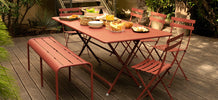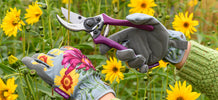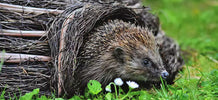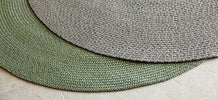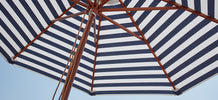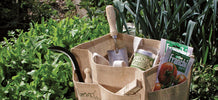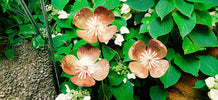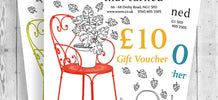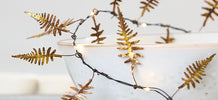New beginnings
Lina Rickardsson returned to her hometown of Falun in central Sweden and came upon a weavers’ association located in an old school house. With her life-long interest in weaving, it came as no surprise that Lina ended up behind a loom. 'She felt comfortable and at home there.
This was how it all began, when Lina was a young twenty-four-year-old, weaving with love and passion.
Lina moved to Gothenburg on the west coast of Sweden shortly after, where she took courses in painting and weaving. Her passion was the weaving, and soon decided this would be her focus after noticing the interest in her work. With her products – linen rugs and paper placemats – in the crook of her arm, she visited possible retailers in Gothenburg. The boutique store Norrgavel were delighted to see Lina’s handwoven rugs and ordered twenty-four. Her interest had now become both a business and a profession.
The Dalarna weaving mill
Quickly, however, Lina realized that she would be unable to do all the weaving herself and began seeking out a weaving mill. At this time in Sweden, most such mills were struggling, many having already closed down. Finally, she discovered a small family-owned mill in Dalarna, in the heartland of her home Sweden, that had been weaving in linen since the fifties and established a traditional loom alongside its three employees.
A new material
While in Dalarna, Lina discovered the same colourful plastic ribbons that had been used to make rugs in the seventies. She was immediately inspired to create experimental “new” rugs of plastic in which the bold-coloured plastic itself would be the feature. Using a new tying technique and twice as much material as normal, she created a beautiful and practical rug that would be the first of its kind on the market.
Lina's first steps
The weavers at the mill were initially skeptical. The rug would most likely not sell since the price would be too high due to the exceptionally large amount of material involved, they thought. But Lina believed in her idea: the new, thick, colourful plastic rug made its first appearance in January 2000 at the Formex trade fair in Stockholm. The interest in the new plastic rug changed Lina’s focus: she sold 124 rugs in plastic and twelve in linen.
Pappelina at Formex
Lina exhibited her plastic rug BOB – a classic square-stripe design woven using a technique to give a soft, generous feel - at Formex in August 2001. It was awarded the distinction Formex Formidabel 2001 for best textile.The following year, the VERA rug made its debut at Formex. VERA was the first rug produced using the jacquard technique, which allows for free-form patterns. Success was immediate!
The best sellers
The rugs BOB and VERA remain bestsellers and are often considered classics within Scandinavian design. Lina continues to develop beautiful new patterns and new tying techniques. The product range may be increasing, but the essence of Pappelina remains the same: simple, stylish, functional. Pappelina continues to reach its goals, supplying the global market with only the most stunning and sturdy handmade outdoor rugs.
Pappelina at The Worm that Turned
We are proud to stock Pappelina and we know that you'll love their products as much as we do. If you do have any queries about Pappelina rugs, please do not hesitate to get in touch with us on 0345 605 2505.
See Pappelina materials and maintenance
